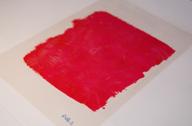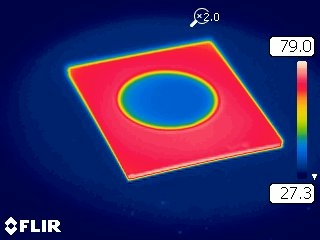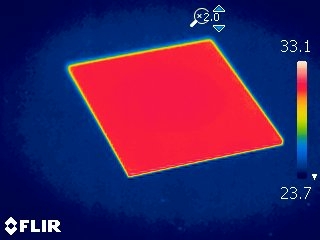Contact: Dr Andreas Schueler, Anna Krammer
Thermochromic vanadium dioxide films exhibit a reversible first-order phase transition from the semiconducting monoclinic to the tetragonal metallic phase at a temperature of 68°C. It is well known that the transition temperature can be decreased by tungsten doping. We discovered that transition temperatures up to 95°C can be achieved by germanium doping of vanadium dioxide films. This discovery is interesting from a fundamental point of view and might help to clarify open question in the theoretical understanding of the semiconductor-to-metal transition. In addition to that, there are useful applications. When such a film is deposited on an infrared-reflecting substrate, the thermal emissivity is low below the transition temperature, and high above the transition temperature. This thermochromic property makes these coatings useful for the overheating protection of solar thermal collectors. Likewise, in the case of overheating of the solar thermal system in summer, the evaporation of the heat transfer liquid can be completely avoided, protecting the collector materials and simplifying the solar thermal installation. Recently it turned out that the semiconductor-to-metal transition of the vanadium-based films can also be exploited in microelectronic devices, such as switchable coplanar waveguide filters, steep-slope devices, and phase-change field effect transistors.
The complex electronic properties of these coatings are characterized by valence band and core level photoelectron spectroscopy (UPS & XPS). Scanning tunneling microscopy (STM) allows to probe the surface with nanometric resolution. The value of the band gap can be determined for single nanometric crystallites by scanning tunneling spectroscopy (STS). Spectroscopic ellipsometry is a highly accurate method for determining the temperature-dependent dielectric function of the thermochromic coatings during the reversible transition from the semiconducting to the metallic phase. The size of the nanocrystals in the nanocomposite texture of the films is measured by X-ray diffraction (XRD), while the chemical composition can be inferred from Rutherford backscattering (RBS) or electron probe micro-analysis (EPMA). The information obtained by the various complementary techniques helps us to understand the fascinating physics of these novel thermochromic solar coatings.



Fig. 1: Thermochromic transition of an organic paint which changes its colour from red to white at a transition temperature of 35°C. The transition can be induced by simply warming up the sample with one’s hands.


Fig. 2: Infrared imaging of the thermochromic behaviour of an inorganic thin film. Above the transition temperature, the film shows metallic behaviour and is opaque (image on the left). Below the transition temperature, the film is semiconducting and therefore IR – transparent (image on the right).
Ongoing PhD Thesis
A. Krammer, tentative title of PhD thesis: Doping of thermochromic oxide coatings for overheating protection of solar thermal collectors
Completed PhD Thesis
Switchable Selective Absorber Coatings for Overheating Protection of Solar Thermal Collectors. Thèse EPFL, n° 5878 (2013)
Publications in this domain:
A. Krammer, A. Magrez, W.A. Vitale, P. Mocny, P. Jeanneret, E. Guibert, H.J. Whitlow, A.M. Ionescu, A. Schüler, Elevated transition temperature in Ge doped VO2 thin films, (2017) Journal of Applied Physics, 122 (4), art. no. 045304. DOI: 10.1063/1.4995965
N. Oliva, E.A. Casu, C. Yan, A. Krammer, T. Rosca, A. Magrez, I. Stolichnov, A. Schueler, O.J.F Martin, A.M. Ionescu, Van der Waals MoS2/VO2 heterostructure junction with tunable rectifier behavior and efficient photoresponse, (2017) Scientific Reports, 7 (1), art. no. 14250. DOI:10.1038/s41598-017-12950-y
Influence of doping in thermochromic V1−xWxO2 and V1−xAlxO2 thin films: Twice improved doping efficiency in V1−xWxO2, in Journal of Alloys and Compounds, vol. 621, p. 206-211, 2015. DOI:10.1016/j.jallcom.2014.08.264
Temperature-dependent multiangle FTIR NIR-MIR ellipsometry of thermochromic VO2 and V1-xWxO2 films, in Solar Energy, vol. 118, p. 107-116, 2015. DOI:10.1016/j.solener.2015.05.020
Thermal solar collector with VO2 absorber coating and V1-xWxO2 thermochromic glazing – Temperature matching and triggering, in Solar Energy, vol. 110, p. 151–159, 2014. DOI:10.1016/j.solener.2014.08.033